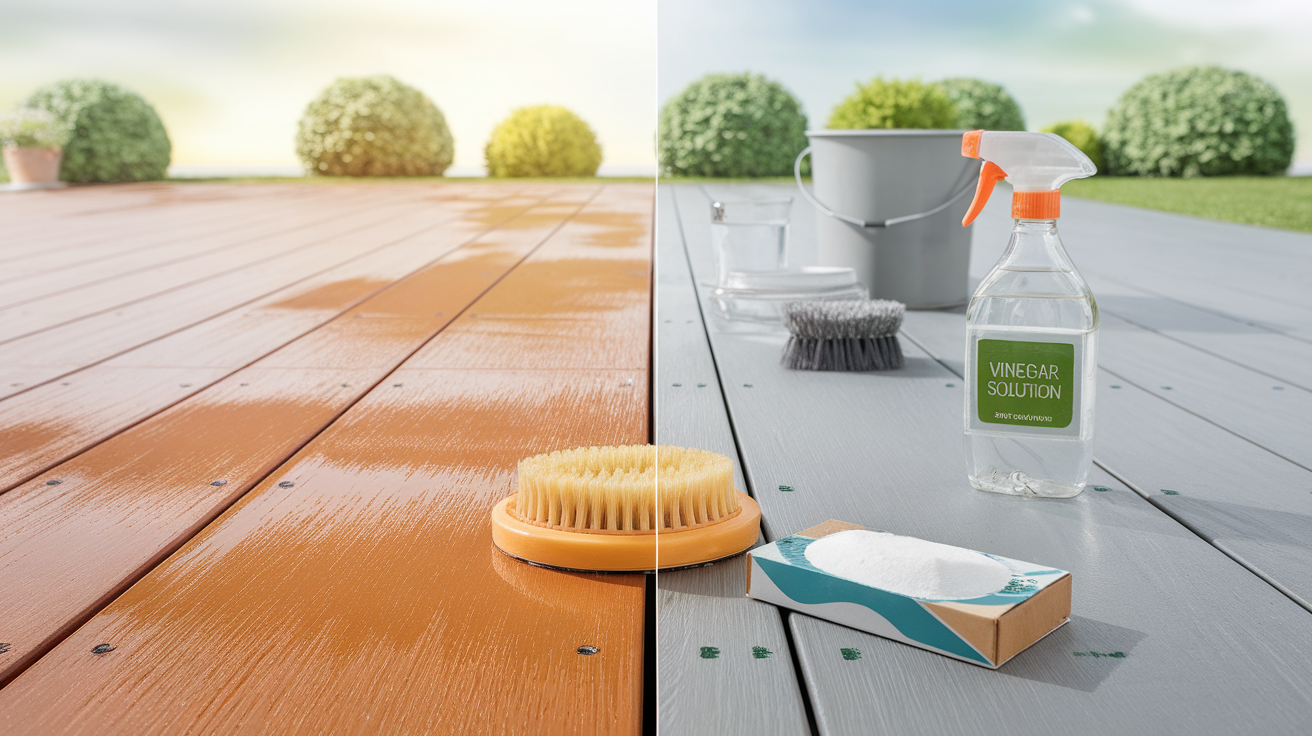Your composite deck appears dirty, and you’re looking for a simple, natural way to clean it. Vinegar might be the solution you’re looking for.
Increasingly, homeowners are turning to Vinegar because it’s safe, affordable, and effective on many surfaces.
It’s not just for kitchens anymore; people are using it outside too.
Can Vinegar be used on a composite deck? Yes, it can, and this guide will show you how to do it correctly.
You’ll learn step-by-step how to clean your deck safely with Vinegar, including what mistakes to avoid and when to use alternative options.
I’ve tried cleaning decks with Vinegar, and I’d like to help you, too. Let’s keep your deck looking great without making costly mistakes.
Why Vinegar Is a Popular Choice for Cleaning?
Vinegar is a popular choice for cleaning because it’s safe, natural, and readily available. Many people already have it in their kitchen, which makes it a simple option.
It doesn’t contain harsh chemicals, making it safer for kids, pets, and the environment. That’s why more homeowners are using it both inside and outside their homes.
Vinegar works well on dirt, grease, and even mold. It also kills certain types of bacteria and eliminates unpleasant odors.
It costs much less than store-bought cleaners, which helps people save money.
With the proper steps, vinegar can clean many surfaces without causing damage. That’s why so many people trust it for everyday cleaning jobs.
Is Vinegar Safe and Suitable for Cleaning Composite Decking?
Vinegar is generally safe for cleaning composite decking, but it’s essential to use it correctly.
| Vinegar Benefits | Vinegar Risks |
|---|---|
| Removes everyday dirt and grime | May fade specific deck colors |
| Naturally kills mold and mildew | Has a strong smell during cleaning |
| Safe for nearby plants and soil | Needs to be diluted to avoid damage |
| Low cost and easy to find | Might not be recommended by all brands |
Before cleaning, always test a small, inconspicuous area and refer to your manufacturer’s care instructions. That way, you avoid surprises and protect your deck for years to come.
Common Household Surfaces You Can Clean with Vinegar
Vinegar works on many surfaces around your home. Knowing where it works helps you understand why it’s suitable for decks.
- Kitchen countertops (except natural stone)
- Sinks and stainless steel appliances
- Bathroom surfaces like shower doors, toilets, and tiles
- Windows and mirrors (for streak-free shine)
- Tile, laminate, and sealed hardwood floors (always dilute)
- Outdoor furniture includes plastic, metal, and glass
- Composite decking (with proper dilution and care)
How to Clean Decking with Vinegar
Cleaning your composite deck with Vinegar isn’t hard. But doing it right makes all the difference. Follow these steps for the best results:
1. Test Your Spot

Always start by testing a small, hidden area on your deck before cleaning the entire region. Choose a spot in a corner where people won’t notice any change.
Spray your vinegar solution there and wait about 10 minutes. Look closely for any color changes, fading, or surface damage.
If everything appears to be in order, then it’s safe to proceed.
This simple step can save you from making a big mistake.
Different brands or colors of composite decking can react differently to Vinegar. It’s always smarter to test first than to regret it later.
2. Apply Vinegar
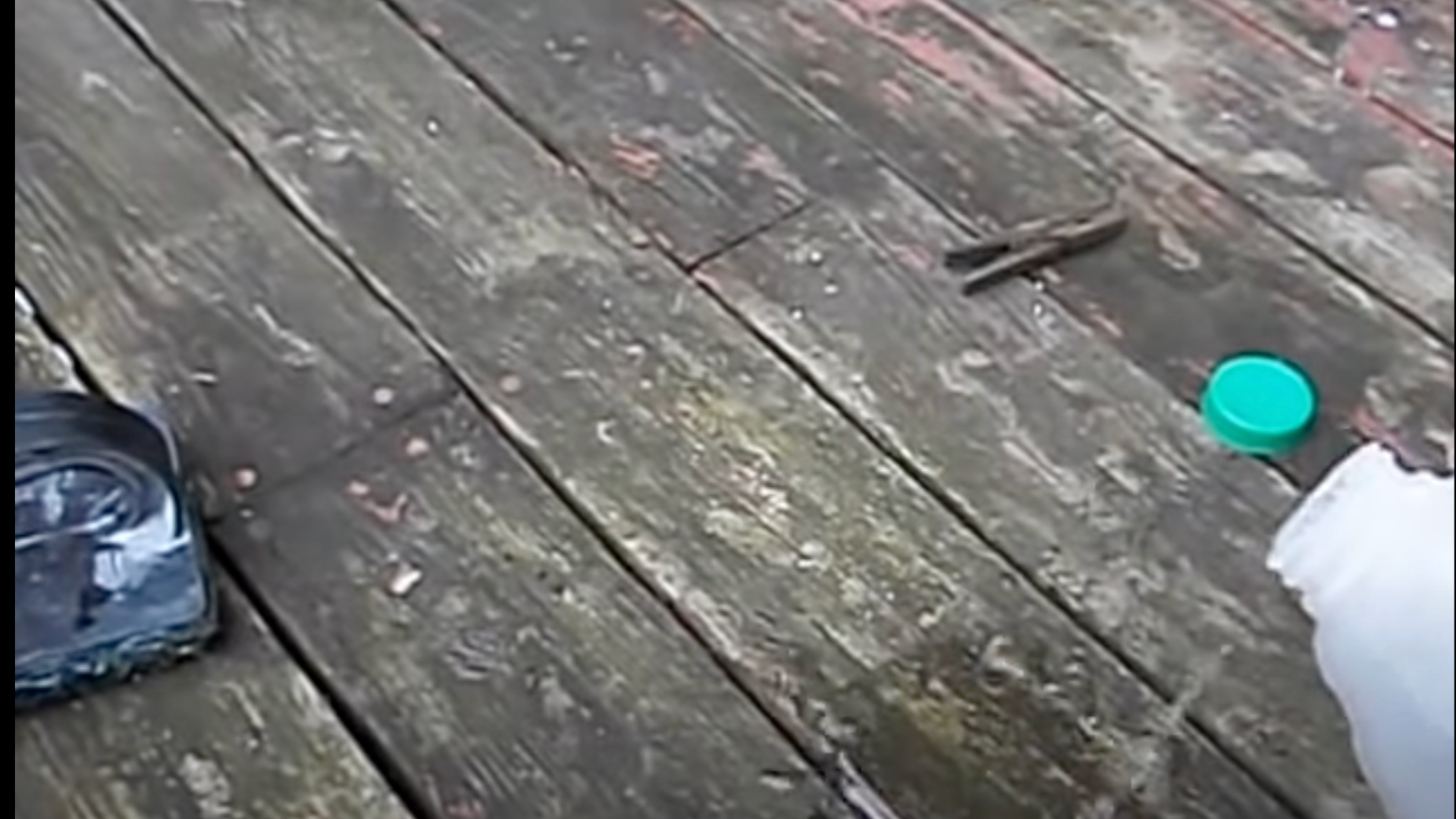
Spray or pour your vinegar mix over a small section of your deck. Try working in 4-by-4-foot areas so it’s easier to manage and control.
Let the Vinegar sit for 5 to 10 minutes, but don’t let it dry out completely. It needs to stay damp to work properly on dirt and mildew.
If some areas are extra dirty, use a soft-bristle brush to scrub. Make sure you scrub gently and follow the direction of the boards, not across them.
This helps clean without scratching your deck.
3. Apply Water
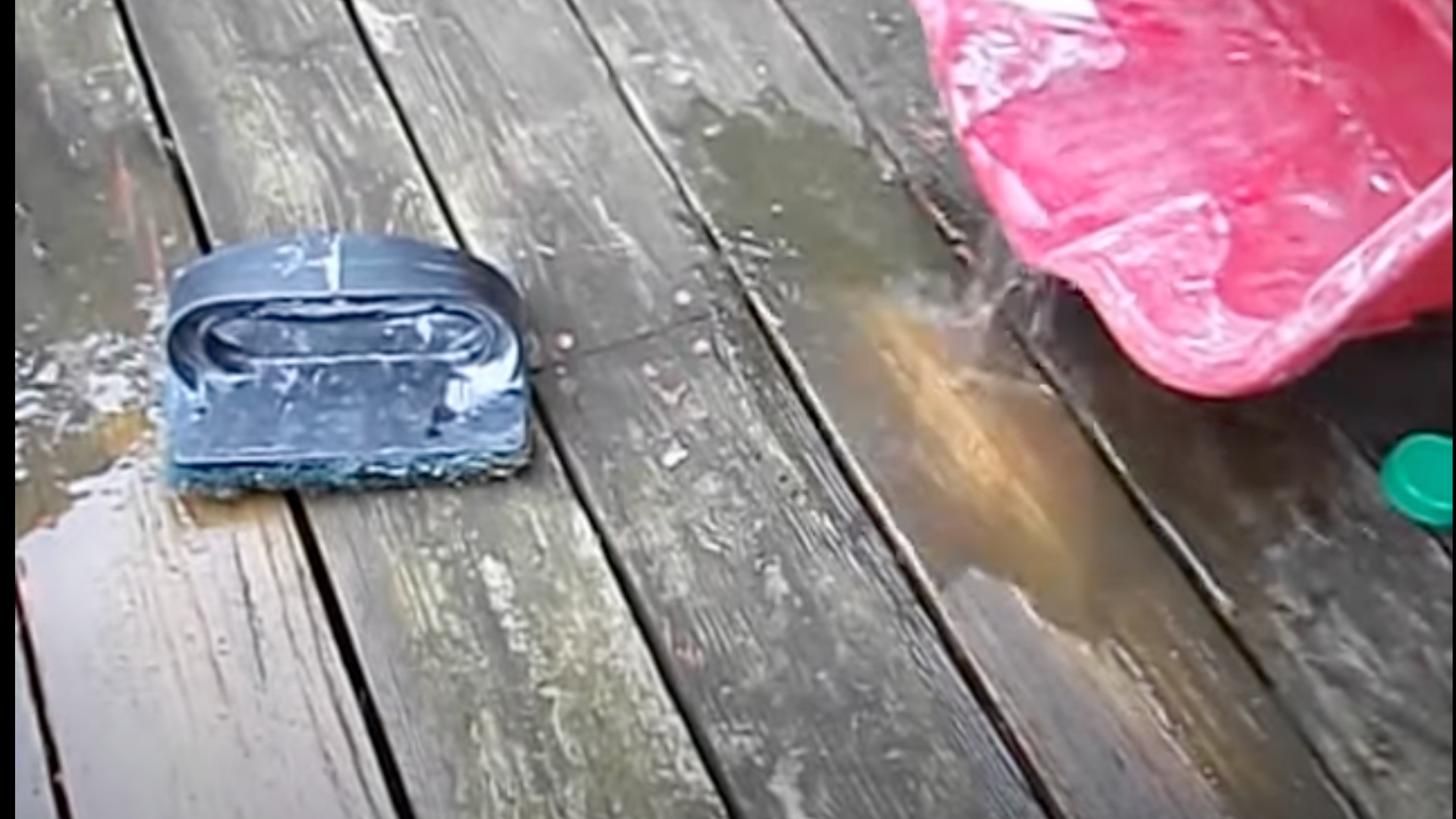
After cleaning a section, rinse it off before moving to the next one. Use a garden hose with a spray nozzle to wash away the Vinegar and dirt.
Avoid using high-pressure washers, as they can damage composite decks. A regular hose with steady pressure works just fine.
Make sure to rinse thoroughly. Leaving Vinegar on the surface too long can cause damage.
Move across your deck section by section, cleaning and rinsing as you go. This keeps everything neat and safe.
4. Apply Baking Soda
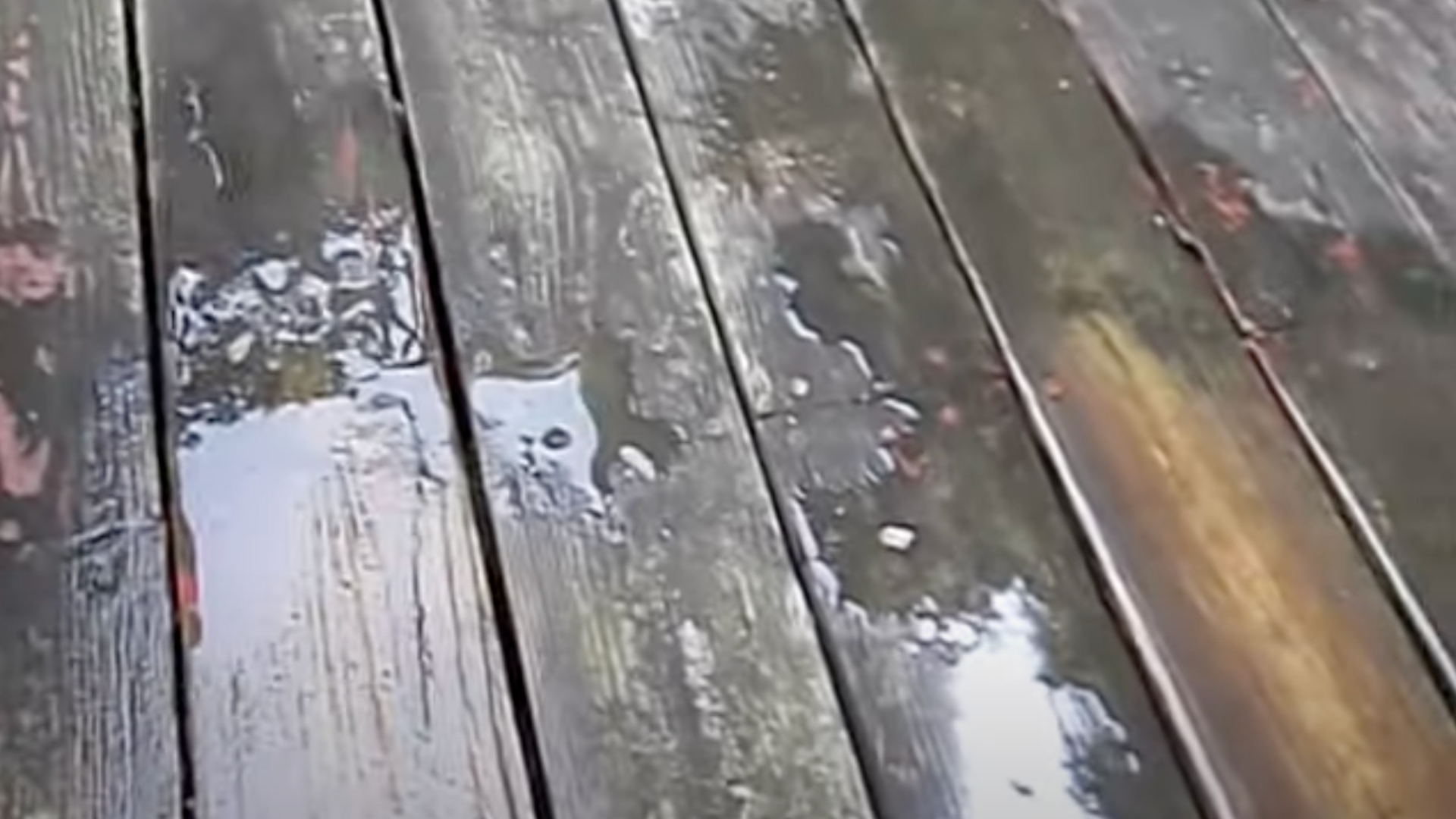
After rinsing, you can use baking soda to remove any leftover vinegar. Sprinkle it over spots that still smell strong or feel too acidic.
Let the baking soda sit for a few minutes. If it starts to bubble or fizz, that means it’s balancing the Vinegar’s acid.
This helps protect your deck from long-term damage. It also removes that strong vinegar smell.
Even if your deck appears clean, this extra step provides added protection and peace of mind.
5. Rinse It with Water
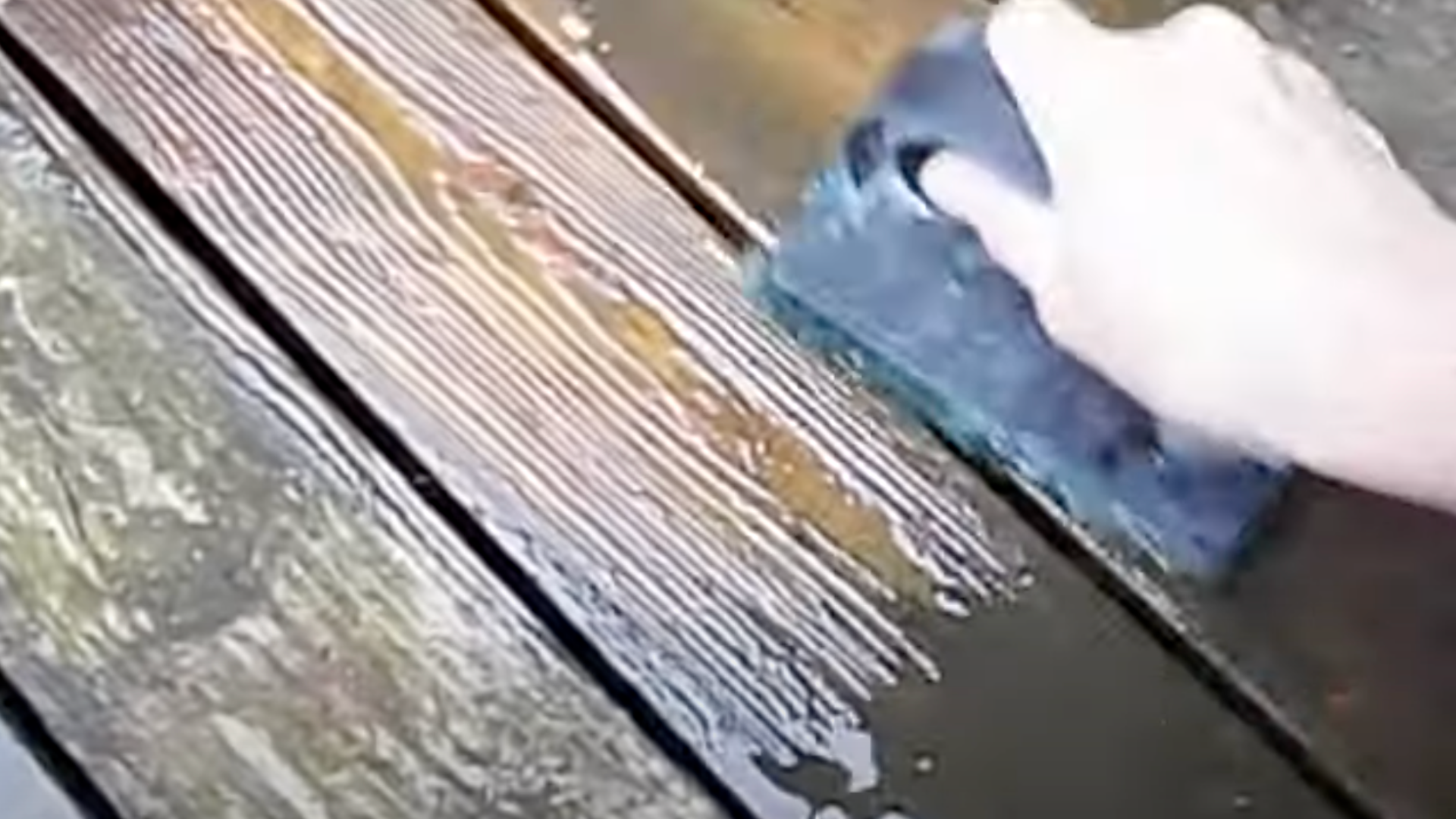
Give your deck one last rinse to wash away baking soda, dirt, and any leftover cleaning mix. Use a generous amount of water to get everything off.
As you rinse, look for any spots you may have missed. It’s easier to fix them now while you still have your supplies out.
Once you’re done, let the deck dry fully. This typically takes 2 to 4 hours, depending on the weather conditions.
Don’t walk on it while it’s still wet, so your hard work stays clean and smooth.
To see the steps in action, watch this video from @shannon12345637. It is concise and to the point, showing you an easy way to clean your decks with Vinegar.
Alternative to Vinegar for Composite Deck Cleaning
If Vinegar doesn’t work for you, you can use the following cleaners that work just as well, if not better, than Vinegar:
- Commercial composite deck cleaners: Made for composite materials; fast-acting but more expensive
- Dish soap Waterater: Great for light cleaning and regular maintenance
- Oxygen bleach: Works well on stains and mildew; safer than chlorine bleach
- Pressure washing: Use with low pressure and the correct nozzle; move the wand constantly to prevent damage
Conclusion
Vinegar is a safe and simple way to clean composite decking. It’s low-cost and works well without using strong or harmful chemicals.
But the key to success is doing it the right way.
Always start with a test spot, mix the Vinegar properly, and rinse the deck well afterward. These steps help protect your deck and keep it clean.
Before you begin, check your deck’s care guide or warranty for specific instructions. Some brands have rules about cleaning, and following them keeps your coverage safe.
Your deck is an essential part of your home. Keeping it clean with Vinegar or other gentle methods helps it maintain its appearance for years.
Please start with the test method I explained, take your time, and don’t rush. Have you tried Vinegar or other cleaning tips? Share your ideas in the comments to help others!
Frequently Asked Questions
Can I Use Apple Cider Vinegar Instead of White Vinegar?
White Vinegar is better for cleaning decks, as apple cider vinegar can leave stains or sticky residue on composite materials. Stick with white Vinegar for best results.
How Often Should I Clean My Composite Deck?
You should clean your composite deck two to three times a year. The best times are during spring and fall when dirt buildup and seasonal changes are most common.
Will Vinegar Kill Plants Around My Deck?
Diluted Vinegar is usually safe near plants, but it’s a good idea to rinse any nearby grass or flowers with water afterward to prevent damage from accidental splashes.
Can I Mix Vinegar with Other Cleaners?
Never mix Vinegar with bleach or hydrogen peroxide. Combining these can create harmful fumes that are dangerous to breathe, even in outdoor areas.
Does Vinegar Remove Oil Stains from Composite Decking?
Vinegar can help with minor oil stains, but for bigger grease spots, dish soap and water often work better and are safer for composite surfaces.

